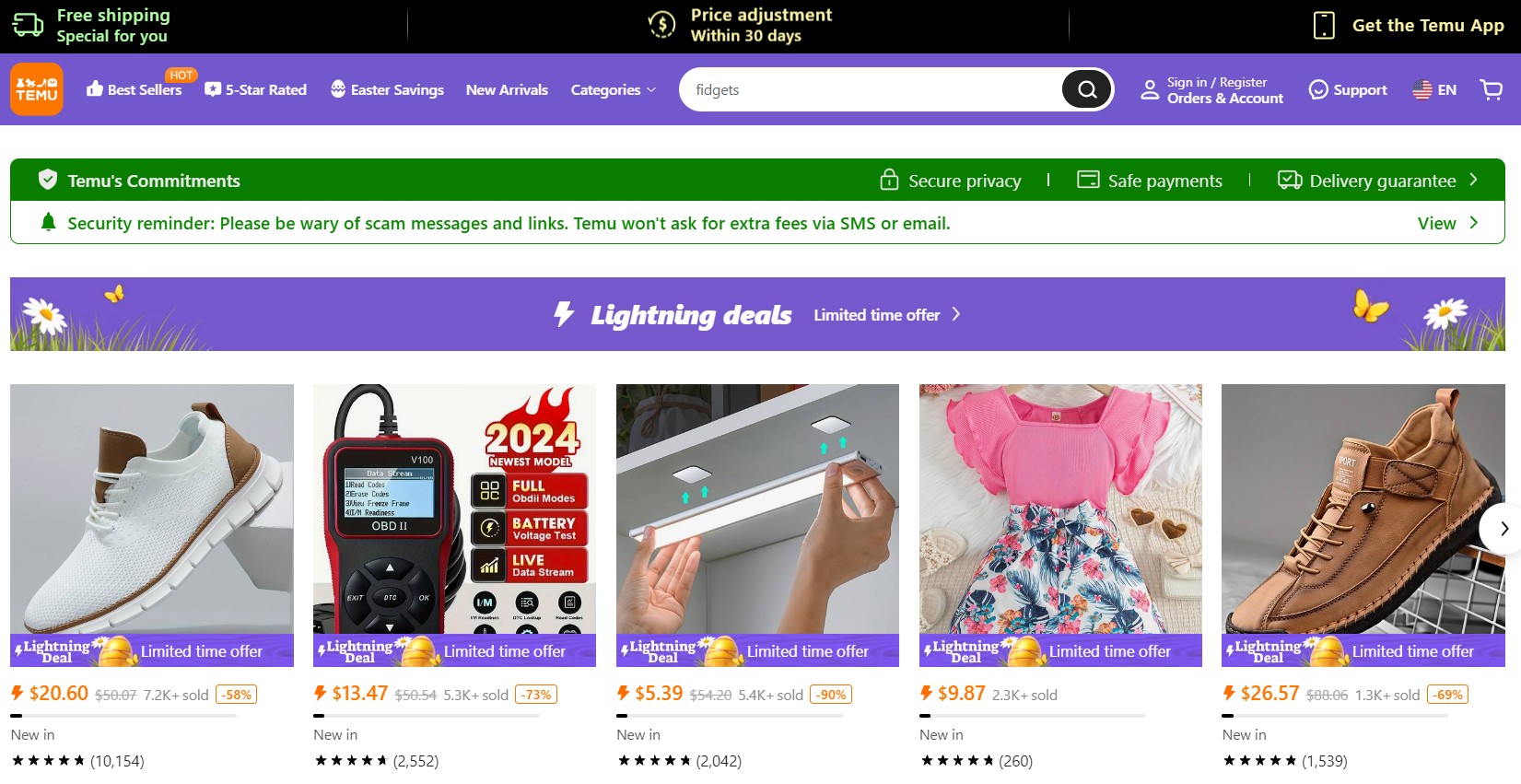Temu’s incredibly low prices have taken the online marketplace by storm, leaving many wondering how they compare to e-commerce giant Amazon. This article delves into the key reasons behind Temu’s affordability, examining differences in business models, supply chains, and target audiences.
Decoding the Price Discrepancy: Temu vs. Amazon
Several factors contribute to the significant price difference between Temu and Amazon:
Direct-to-Consumer Model: Cutting Out the Middleman
Temu operates on a direct-to-consumer (DTC) model, connecting manufacturers directly with buyers. This eliminates intermediaries like wholesalers and distributors, who typically add markups to cover their costs and profits. Amazon, while allowing DTC selling, predominantly hosts third-party sellers who often source products through multiple layers of distribution, leading to higher prices.
Temu’s direct-to-consumer model connects manufacturers directly with consumers.
Supply Chain Efficiency and Bulk Orders
Temu leverages its strong relationships with Chinese manufacturers and utilizes efficient logistics to minimize costs. The platform encourages bulk orders from manufacturers, leading to economies of scale and further reducing per-unit costs. Amazon’s vast and complex global supply chain, while robust, involves more intricate logistics and handling, contributing to higher prices.
Subsidies and Next-Day Delivery Trade-off
Temu benefits from subsidies provided by its parent company, Pinduoduo, enabling them to offer extremely competitive pricing and aggressive marketing campaigns. Furthermore, Temu prioritizes affordability over speed, accepting longer shipping times in exchange for lower costs. Amazon, particularly with its Prime membership, prioritizes fast and reliable shipping, often incurring higher logistical expenses.
Amazon prioritizes fast shipping and a wide selection of branded products.
Product Quality and Brand Recognition
Temu primarily focuses on unbranded or lesser-known brands, allowing for lower production costs compared to established name brands commonly found on Amazon. While Temu maintains quality control measures, its emphasis on affordability may sometimes result in products with different quality standards compared to premium brands available on Amazon. This difference in brand recognition and associated quality expectations further contributes to the price gap.
Target Audience and Market Positioning
Temu targets budget-conscious consumers seeking value-driven deals and discounts. This focus allows them to prioritize low prices and high volume sales. Amazon caters to a broader audience, including those willing to pay a premium for established brands, faster shipping, and a wider product selection. The distinct market positioning of each platform significantly influences their respective pricing strategies.
Conclusion: Navigating the Trade-offs
The price difference between Temu and Amazon reflects different business strategies and priorities. Temu emphasizes affordability, leveraging a DTC model, efficient supply chains, and a focus on budget-conscious buyers. Amazon prioritizes a broader selection, established brands, faster shipping, and a premium customer experience, resulting in higher prices. Ultimately, the choice between the two platforms depends on individual consumer preferences and priorities – whether speed, brand recognition, or price takes precedence.

